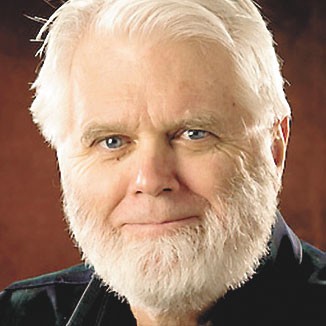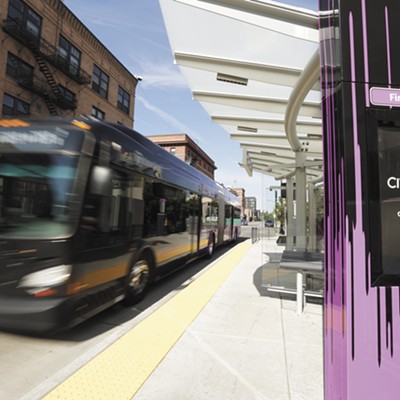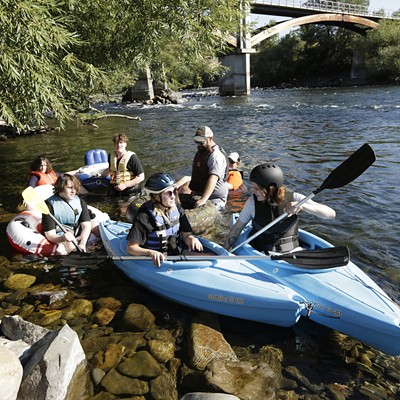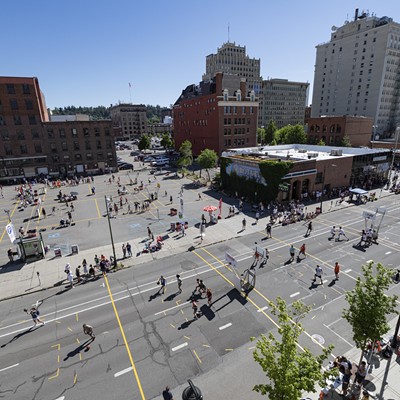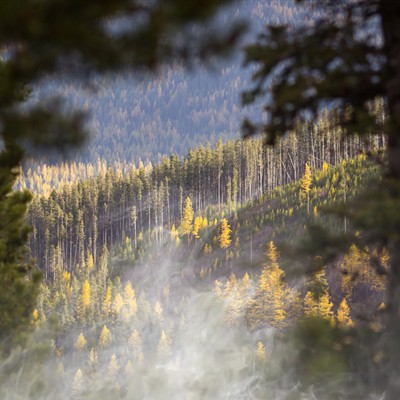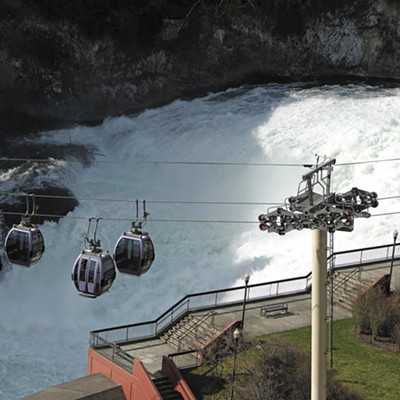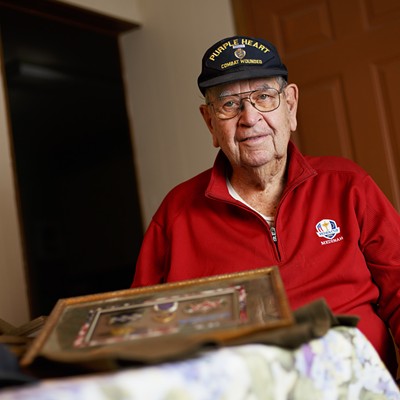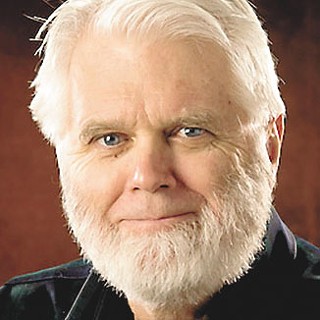It's Sunday morning, April 27: temperature cold, in the high 40s, and wet. Out at Qualchan Golf Course, the golfers are arriving. Thirty-seven cars are in the lot by 10:50. To my drive-by view, the greens and fairways seem in good shape. A few fairways haven't begun growing yet, but all in all for springtime in Spokane? No complaints.
I drive from Qualchan out to Esmeralda. I arrive at 11:20 and already 66 cars are parked. A light rain is falling. From Esmeralda I drive over to Downriver, where I count 73 cars in the lot and on the street.
Then I make the drive over to Indian Canyon and find... seven cars in the lot!
Offhand, I can think of maybe a dozen or so quintessential Spokane "things" — you know, people, buildings, civic accomplishments — that transcend the narrow confines of our little universe out here behind, as one wag put it, "the pine tree curtain." On my list: Kirtland Cutter, especially the Davenport Hotel; opera diva Patrice Munsel; Expo '74; the Martin Woldson Theater at the Fox; John Stockton; Bing Crosby; plus a couple of writers, most notably Jess Walter (who has stuck around).
To that list, we must add Indian Canyon Golf Course. In addition to presenting the grandest view of the city anywhere, the course has hosted two United States Amateur Public Links championships, one U.S. Women's Amateur Public Links Championship and two Washington State Amateur Championships. For years, the Canyon appeared on Golf Digest's list of the 100 best public courses in America. The four-round course record is held by the great Byron Nelson. Today, the annual Rosauers Open Invitational tournament, the creation of head professional Gary Lindeblad, raises money for the Vanessa Behan Crisis Clinic and is the largest PGA competition in the Northwest Section.
Designed by Chandler Egan, who was largely responsible for the redesign of Pebble Beach and many other famous courses, Indian Canyon was built during the Great Depression by the Works Progress Administration. And I haven't even begun to discuss the important Native American part of the story. Suffice to say, Indian Canyon is more than a golf course; it is our history.
So how is it that the city has allowed the course to deteriorate to the point that, when the city's other three courses are drawing large numbers, fewer than a handful show up to play the Canyon?
Walk to the clubhouse door and you have your answer: five holes are still on temporary greens, and no golfer wants to play on temporary greens.
Forget looking in the direction of the most beleaguered target; I refer to the head professional. The head professionals do not control the care of the courses; that responsibility falls to the course superintendent who is hired by the Parks Department, which reports directly to the Park Board.
The cause of this year's problem at the Canyon? According to Ross Kelley, Park Board Golf Committee chair, the problems resulted from a decision, supported by all four greens superintendents, to not cover the greens during the winter months. As a result, five greens are now terribly stressed. A reasoned, but in retrospect, bad decision.
I suggest that today's greens problems are merely representational. Our community treasure has been largely ignored for years (for example, its antiquated watering system), and actually has been under siege for the past seven years. You see, from 2007 through 2012, the driving range flooded every spring — thanks to the city's absurd decision to permit a developer to direct his runoff water onto the course. It took five years to correct the problem. Then, last year, came the first greens disaster. And now, in spring of 2014, we look at the second year of greens not being ready to play.
Loss of play translates into loss of income, both to the head professional and the city. While greens fees go back to the city, the play numbers translate into cart rentals, restaurant revenue, driving range revenue, club sales, lessons and all the sources of income for the staff.
Kelley points out that the Canyon, because of its elevation and siting, has always confronted the biggest weather challenges. There is some good news; it seems that the Canyon's fairways survived the winter, and, says Kelley, today are in "the best shape of any of the city's courses." Once the greens have responded, play could well return.
The bad news is that the Canyon's poor condition relative to many of our other area courses is creating a snowball effect. What's needed is the recognition that the course is important to our city's history, that it has unique symbolic importance and that years of neglect must be addressed, and not merely as just one course among four. ♦

